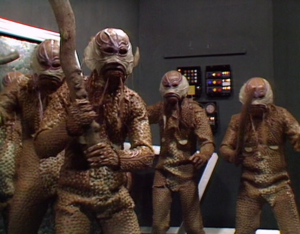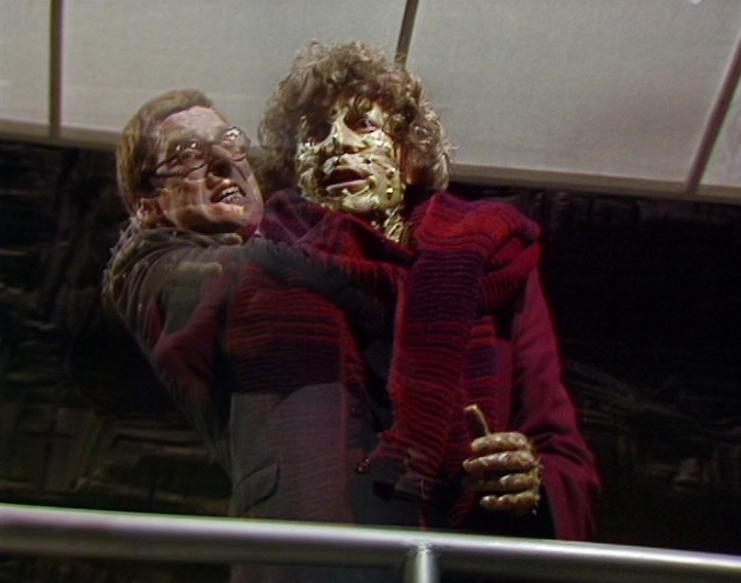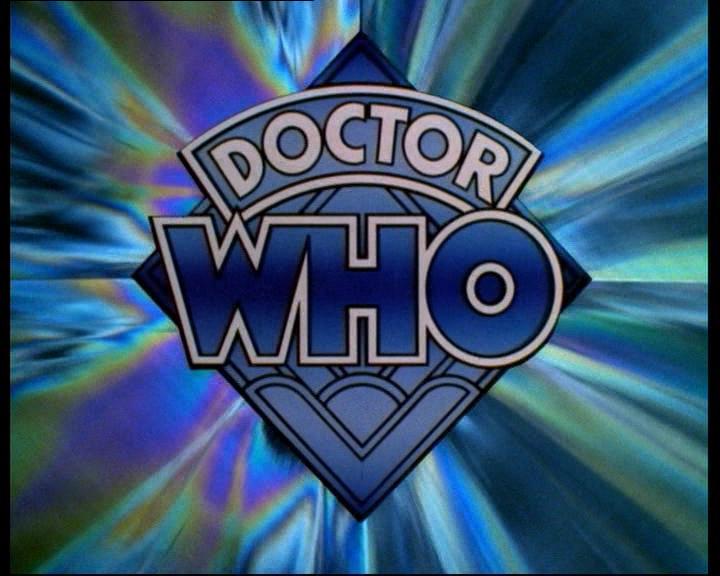Doctor Who: Full Circle
(4 episodes, s18e09-e12, 1980)

A funny thing happened on the way to Gallifrey.
The first chapter in the E-Space Trilogy kicks off with our traveling Time Lords tying up loose ends. They drop off “Clark Kent” and set course for Gallifrey, but Romana doesn’t want to go. She’s addicted to the adventure, despite only being tasked with helping resolve the Key to Time crisis. Luckily for them, the TARDIS passes through an indescribable phenomenon and ends up in E-Space, an alternate universe.
There is a village nearby where humanoids are living an agrarian lifestyle, however the TARDIS scanners show that the Time Lords should be on Gallifrey. As the Time Lords troubleshoot the TARDIS, a senior villager known as a Decider investigates strange eggs in the river fruits. Among the villagers are a group of rebels called the Outlers who steal from the village to survive outside the community. One of the Elites in the village, a boy named Adric, is petitioning for membership in the rebel group to join his brother Varsh. To prove his worth, he must steal some river fruit for the Outlers. During his attempt a strange phenomenon called Mistfall begins, and the First Decider (and keeper of the System Files) orders the villagers into the Starliner, a derelict starship bordering the community. Despite not having the entire village aboard, the Deciders order the ship sealed to protect those inside.
Adric takes the opportunity to complete his task, but he is chased by the First Decider. During the pursuit, the Decider falls and is pulled into the river. Adric tries to save him and fails, but is left with a message: “Tell Dexeter we’ve come full circle.” Hey, it’s the title!
Adric runs through the forest and stumbles into the TARDIS. The Time Lords tend to the boy, who recovers unbelievably fast, and the Doctor investigates the marshes with K9. A group of Swamp Thing creatures emerge from the murky waters and stretch their fins, prompting the Doctor and K9 to retreat. After watching them from seclusion, the Doctor tasks K9 with following them while he attempts to make contact. Romana gives Adric a homing beacon, and he returns to the Outlers only to lead them to the TARDIS. The rebels hold Romana hostage and take over the ship. Meanwhile, Login, the father of Keara (the only girl in the Outler group) becomes a new Decider. Thus another conflict is born.
The Doctor returns to find the TARDIS missing. It has been taken by the Marshmen to a nearby cave, an act that throws everyone off balance inside and defuses the hostage situation. When K9 tracks the TARDIS to the cave, he is immediately beheaded by the Marshmen. With help from the Outlers, Adric and Ramona deduce that the TARDIS is being set up as a battering ram against the starship.
With nowhere else to go, the Doctor heads for the Starliner and gains access with his sonic screwdriver. Of course, the absent-minded Time Lord leaves the hatch open, and an inquisitive Marshman child follows him into the ship. They are both eventually captured, and the Deciders experiment on the child much to the Doctor’s displeasure.
When the Marshmen leave the cave, Romana’s group leaves the TARDIS to investigate but are attacked by a cluster of spiders. Adric accidentally locks Romana out and dematerializes the TARDIS, and the Time Lady is bitten. The TARDIS materializes on the Starliner in front of the Doctor, and he and Adric return to the cave to collect K9 (sans head), a dead spider, and an enthralled Romana. By the time he returns to the ship, the Deciders have pardoned the rebel children and Dexeter has started a lobotomy on the Marshman child. As Dexeter cuts into the child, Romana screams from her room on the TARDIS and, telepathically, the child reacts by killing the scientist and (eventually) itself.
A now incensed Doctor turns on the Deciders and reveals their duplicity: The Starliner has been ready to leave the planet for centuries but the farce of repairing it for the great journey has continued because no one knows how to pilot it. Chagrined, the Deciders provide the Doctor tools to analyze the spiders, but his investigation is interrupted when the enthralled Romana leaves the TARDIS and opens the emergency exits, releasing the Marshmen upon the starship.
While the Doctor and Adric search for Romana, they put the pieces together. The spider and the Marshman child share DNA, the invading Marshmen are more inquisitive than violent, and Adric’s wounds healed quickly. The Doctor finds Romana (and K9’s head) and returns to the lab to continue his research. After the Marshmen invade the ship’s control room and mortally wound the new First Decider, he adds another piece of the puzzle: The villagers have never been anywhere but the planet.
Oh, boy.
The Marshmen invade the lab, but the Doctor’s team is able to drive them back with pure oxygen. Ramona arrives and Adric stuns her with a blast of oxygen, providing the Doctor a chance to administer a serum and reverse the infection. After she recovers, the secret is finally revealed: The villagers are descended from the Marshmen, who in turn descended from the spiders. The Marshmen killed the original crew 40,000 generations ago and evolved to take their place. They have indeed come full circle.
While driving the Marshmen away and sealing bulkheads to isolate them, Varsh is killed, leaving Adric with no surviving family. Meanwhile, the Doctor and the remaining Deciders crank up the oxygen levels and drive the Marshmen off the ship. They convince the Doctor to help them learn to fly, and he sets them on the right course before leaving on the TARDIS with a new image translator courtesy of Adric to continue their voyage.
Little do they know that their benefactor has also stowed away on the TARDIS.
The location shoots added some depth to this story, and complemented the improved story and pacing. That isn’t to say that the latter elements were perfect, since the plot seemed rather thin in the first half because of all the setup. Luckily it picked up a bit in the second. The callbacks to Leela and Andred, as well as Romana’s origins on the show.
Unrelated to the final score, Full Circle – Part One is effectively my birthday episode since it is the closest to my date of birth.
Rating: 4/5 – “Would you care for a jelly baby?”
UP NEXT – Doctor Who: State of Decay
The Timestamps Project is an adventure through the televised universe of Doctor Who, story by story, from the beginning of the franchise. For more reviews like this one, please visit the project’s page at Creative Criticality.






